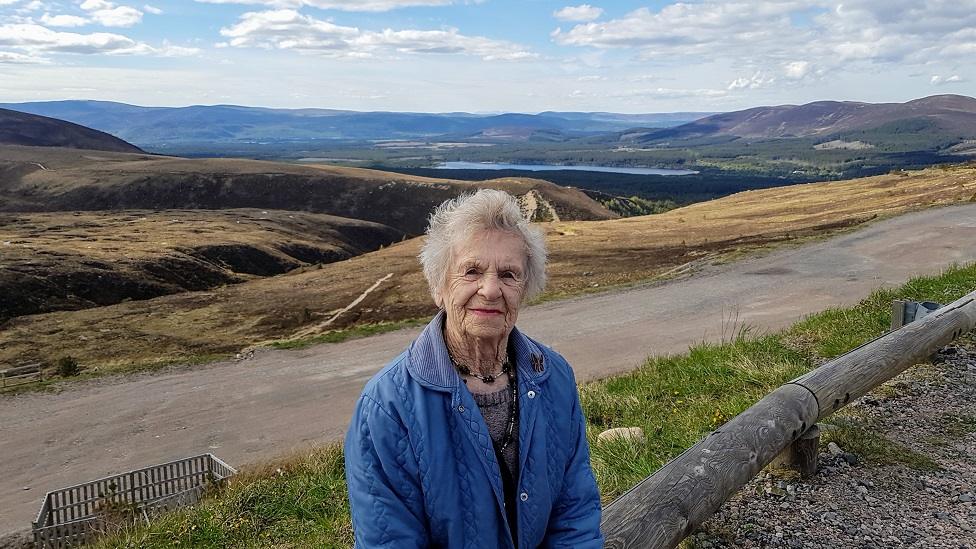Woman buried near war graves she tended for 70 years
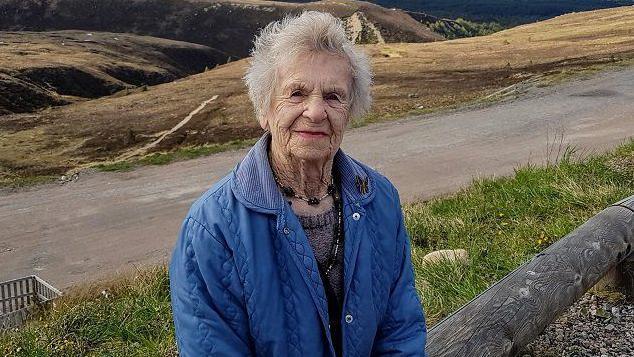
Isobel Harling died on St Andrew's Day
- Published
A woman has been buried opposite the war graves she had tended in a Highland cemetery for 70 years.
Isobel Harling, from Kingussie, died on 30 November. She was 100 years old.
On Tuesday, she was buried near the graves of nine Muslim soldiers killed in training during World War Two that she had looked after since her 20s.
Dr Saqib Razzaq, of archive project Colourful Heritage, said Mrs Harling was an extraordinary woman.

Mrs Harling was buried next to her parents on Tuesday
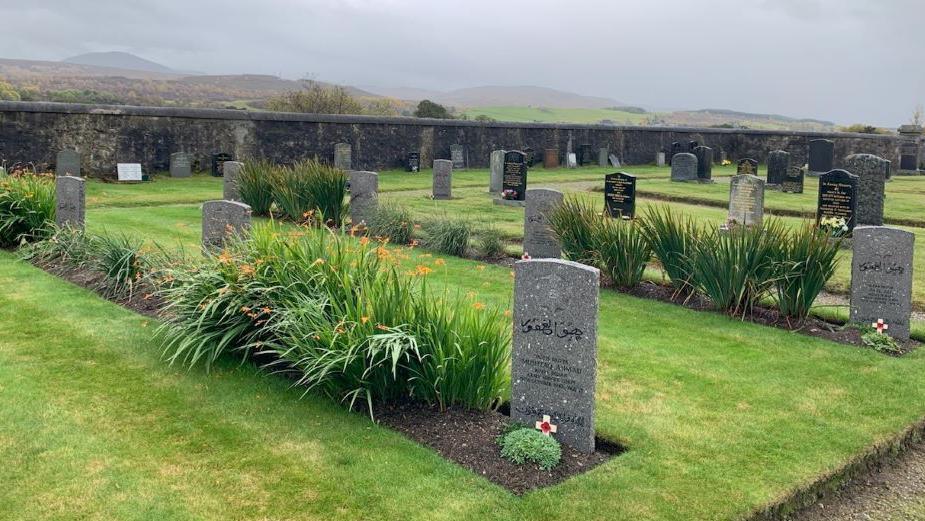
Her grave is opposite those she tended for 70 years
Mrs Harling served with the Women's Royal Naval Service during the war.
She lost a brother in the conflict when his aircraft was shot down over Leuven in Belgium.
Her own loss influenced her dedication to the graves of the soldiers in Kingussie Cemetery.
The soldiers served in Force K6, a transport corps who rode mules and delivered supplies to front-lines.
It was part of the Royal Indian Army Service Corps and the nine men were from a mountainous region that is now part of Pakistan.
The youngest of the nine men was Mushtaq Ahmad, who was only 21-years-old when he died on 19 October 1942.
The oldest in the group was Ali Bahadur, who died aged 38.
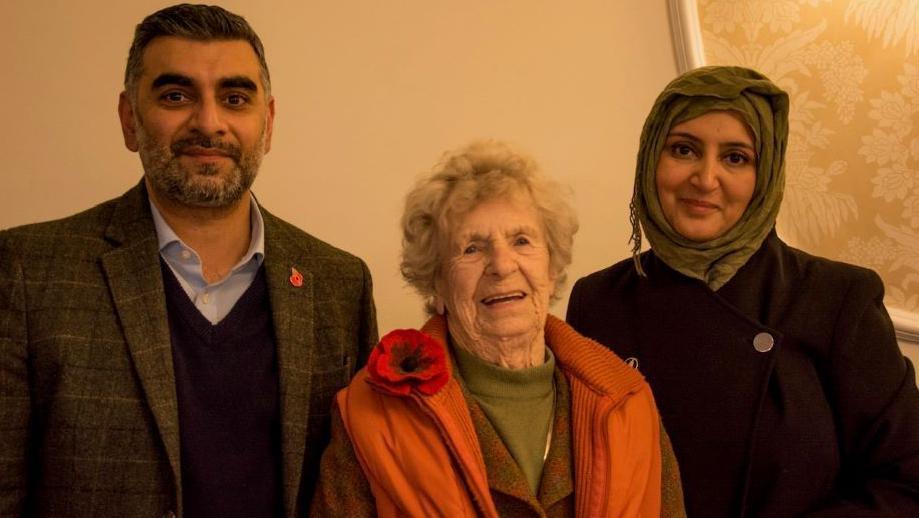
Mrs Harling was a friend of the Colourful Heritage archive project
For many years, Mrs Harling tended the graves herself.
Later, with help from a local gravedigger, she spent years cutting the grass, placing flowers on the graves and keeping the cemetery tidy.
Her volunteer work with Royal British Legion Scotland also helped raise thousands of pounds to support the care of war graves and war memorials, which are maintained by the Commonwealth War Graves Commission in her home area of Badenoch and Strathspey.
In December 2019, she was awarded the British Empire Medal (BEM).
'My Boys'
Colourful Heritage, which is chronicling stories of Scotland’s early generation of Muslim and South Asian migrants, paid tribute to Mrs Harling's dedication.
Members of the project team also travelled to Kingussie for her funeral.
Dr Razzaq said she was buried next to her parents and family, and opposite the graves of soldiers she had called "My Boys".
She said Mrs Harling was an amazing person who selflessly dedicated 70 years to tending the graves.
Dr Razzaq said: "It was an honour for the Colourful Heritage team and many members of the South Asian community to have met her and spend time with her.
"What an extraordinary and wonderful legacy she leaves.
"She is an inspiration to us all. A legend that will never be forgotten."
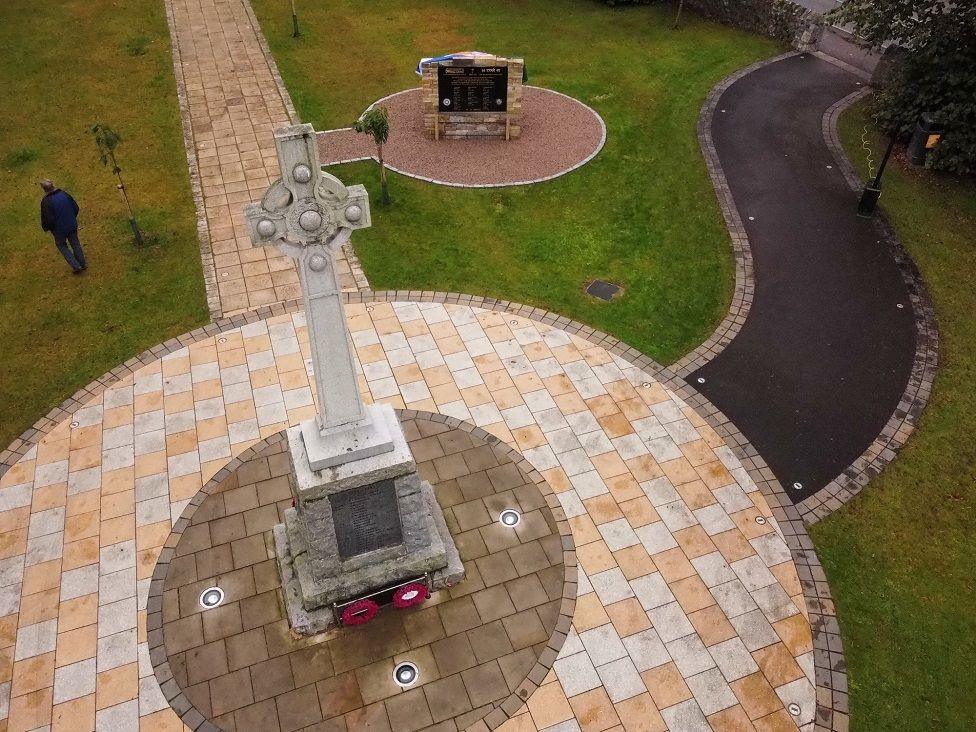
The UK's first permanent memorial to Force K6 soldiers was unveiled in Kingussie last year
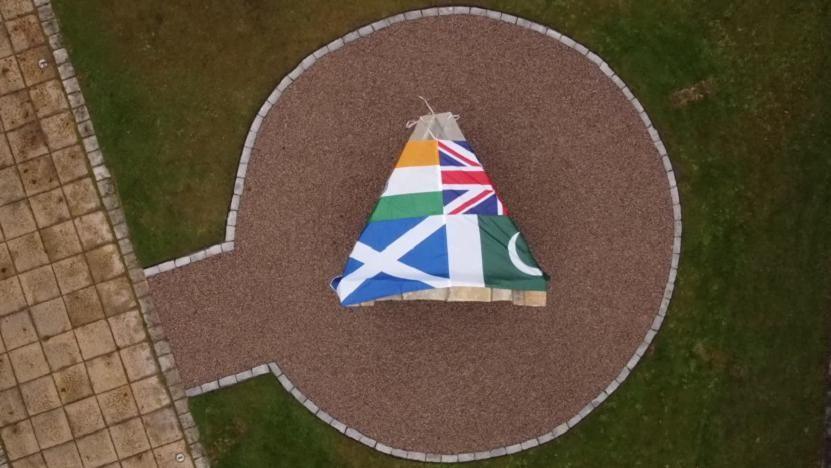
An aerial image of the Kingussie memorial during the unveiling
Kingussie has the single largest graveyard in the UK where Force K6 soldiers are interred.
There are also graves in England and Wales and on the continent in France and Germany.
Last year, the UK's first permanent memorial to Force K6 was unveiled in Kingussie.
Related topics
- Published20 September 2022
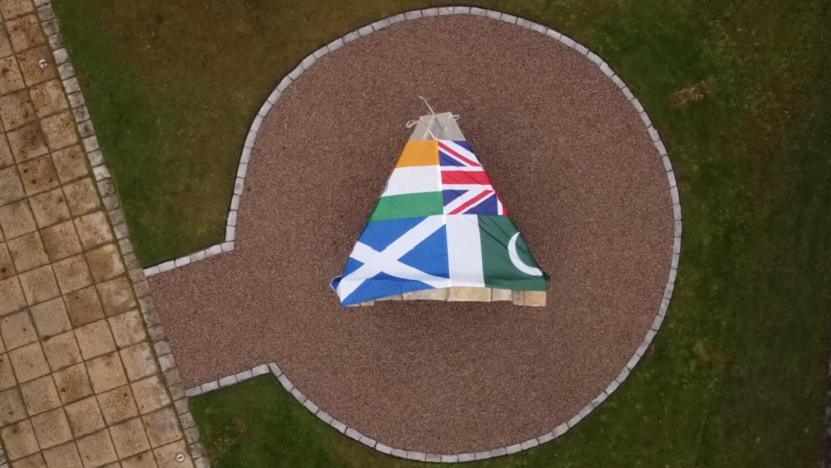
- Published26 July 2022
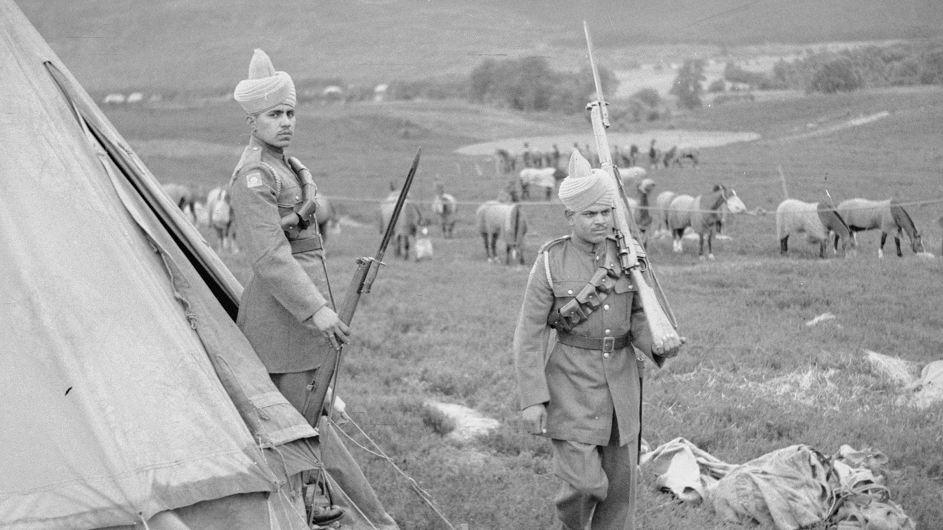
- Published27 June 2020
